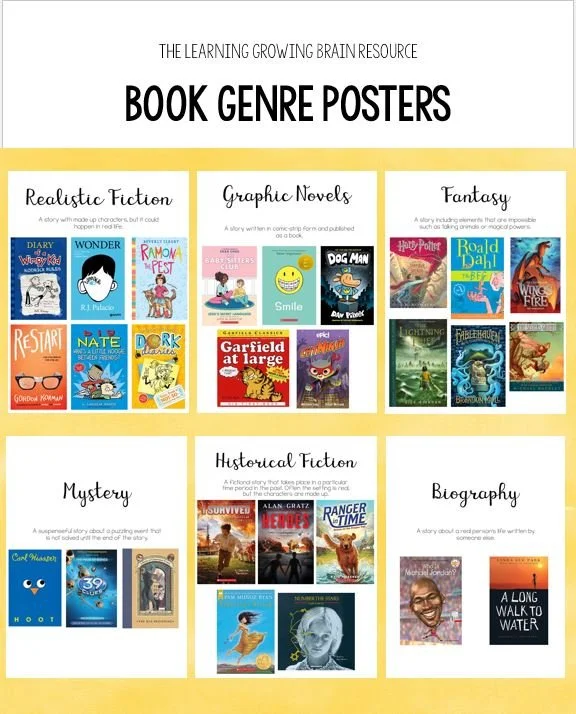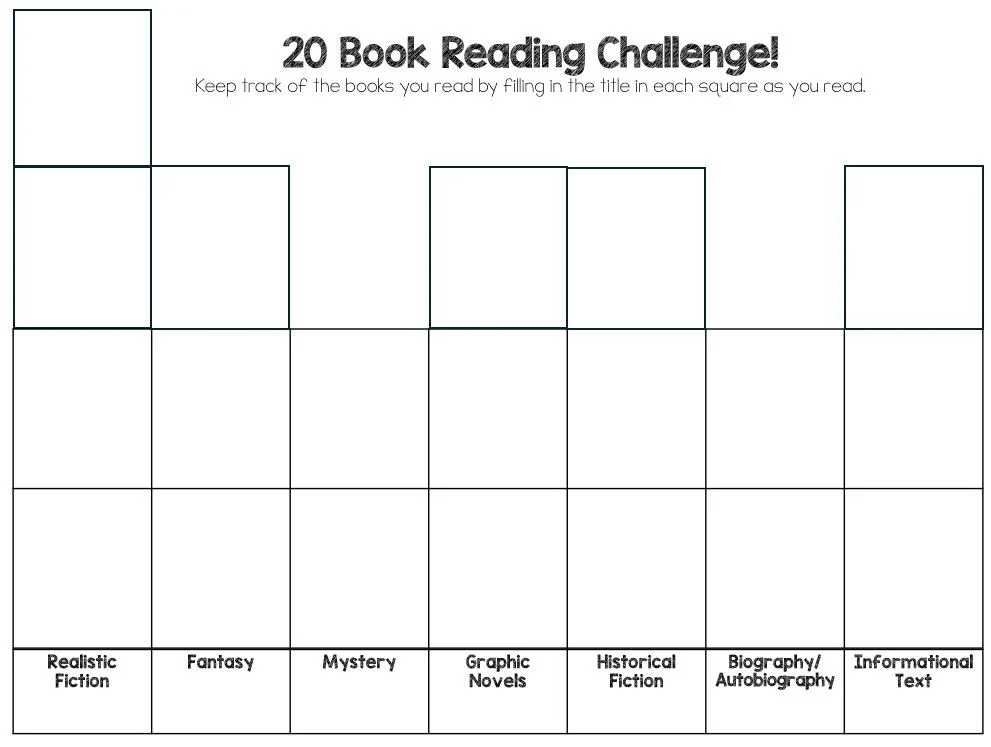A proven way to get kids interested in reading all year
Do you struggle to get your students reading during independent reading time? Have you all but given up on independent reading? Do your students just goof around when they are supposed to be reading? Believe me I’ve been there. The experts say that best practices are to give your students 15-20 minutes every day to read independently. For many years this time turned into more of a free time for students. They were unmotivated to read and more interested in visiting the bathroom, cleaning their desk, drawing or anything else except read!
The reading Challenge
The last couple of years I have introduced the reading challenge and this has been the best motivation to get my students reading. Not only reading but choosing all different types of books to read. Here is the challenge: read 20 books during the year in different genres. Here is the kicker that motivates the students. The students who read 5 books during the term, they get to come to an end of term party.
Also included in this challenge is 4 book reports (one per term) that students complete. These book reports can be completed at home or in class and they are for a grade.
Introduce the challenge
Before school even starts, I prep my classroom to be ready for the challenge. I organize my books by genre in my classroom library. You can do this by putting different genres in different bins. You can also label your books with labels indicating the genre. I also set up a bulletin board with posters of the different genres in the challenge. These posters have some of the popular books for the grades 4-8. I make sure I have the books from the posters in my library or I make sure they are available to check out from the school library. Grab my posters for free here.
During the first week of school I give my students the book challenge graph found in my resource. This shows them exactly what they need to read. I copy this on a bright piece of paper so they can’t miss it and have them glue it into their Language Arts notebook. There are a couple of other reference pages in my resource that you can give out at this time as well. One is a reference page that is a description of each genre. One page is where they write summaries of the books they read.
Explain to the students that they can read five books during the first term of any genre. What I count: reading a book themselves, audiobooks, reading a book in their small reading groups in class, having a parent read to them. What I don’t count: novels we read together, books less than 80 pages, picture books, books they have read or listened to in previous years, movies they watched that are based on books. I explain the rules to them and as they read they will track the books on their graph writing the full title of the book. They will also write a summary of the book. You can use the summary pages for this or you can have them write the summaries on a regular piece of paper.
Students start reading. The first place they look for books is on the book shelf in our classroom. Although they may read books from home or books from the library. There are many times that I will also go with them to the library to help them choose books. This is especially important when I see that the same students are always at the classroom library looking for books. Only in the last term of the year when they have exhausted the books from our classroom library and from the school library do I let them read on Epic.
Give books a try
I always run into the problem of students never finding a book they are interested in. They get up every independent reading time and look for a new book. If this is the case, I give these students a graphic novel to read. This genre is typically more engaging. If they already read all their graphic novels for their graph, I will allow just them to count it for a different genre. The important thing is that they are reading! I may also have an indecisive reader choose a book and read at least 10 pages of that book. If they don’t like it at that point, then they can choose another book.
End of term Parties
The motivation for students is the opportunity to participate in the end of term party. The first term I have a root beer float party, the second is a hot chocolate party (with all the goodies to go on top), the third term is a ice cream sundae party and the fourth term is a pizza party. These parties are usually during lunch and they get to stay in the classroom to eat and get their goodies. In order to qualify for the party, I conference with each student a week or two before the end of term. This is a 5-10 minute conference and I will do this during our small group reading period. The student will show me their graph. They should have 5 books written down. I will put my initials next to five of the books. If they have read more, then just sign off on five and leave the extras for the next end of term party. I then look at their summary page or have them orally tell me about the book in order to qualify. Some students may not want to come to every end of term party or may not have enough books read for the party, if this is the case, I do not conference with them and I will conference with them when they have 5 books read.
Book reports
Another portion of this year long project is the books reports. For each term I choose a different genre book and a project to do with that book. I give the instructions to the kids at the beginning of each term so they can get started right away reading a book. I allow students to either complete this in class or at home. I will always send home a copy of the project so that parents are aware of the book report for the term. While the book graph is NOT a grade, the book reports are a grade. This tends to be a motivation for some kids to read. These books read for the book report can also count on the book graph.
Conclusion
This challenge motivates students to read. Even if students come into class loving to read, this challenge helps them to explore other genres of books. It makes reading fun and exciting and creates a culture of readers in the classroom. Silent reading is a time that they are excited about and library time becomes more meaningful as well. Do I still have reluctant readers in the classroom? Sure I do but the even the reluctant readers will often read more than they ever have in the past. Grab the challenge here and get your class ready to be a classroom of readers this year!



